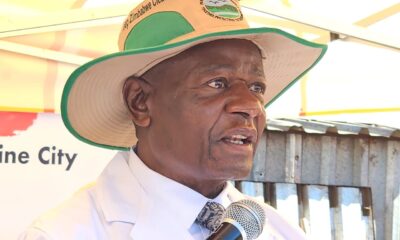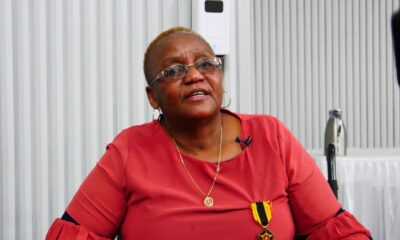Agriculture
Gvt announces drought mitigation plans
In the report Masuka said that Zimbabwe’s double-pronged approach to climate-proofing agricultural production adopted in 2020 was bearing fruit with the country returning to national cereal sufficiency in normal rainfall years.
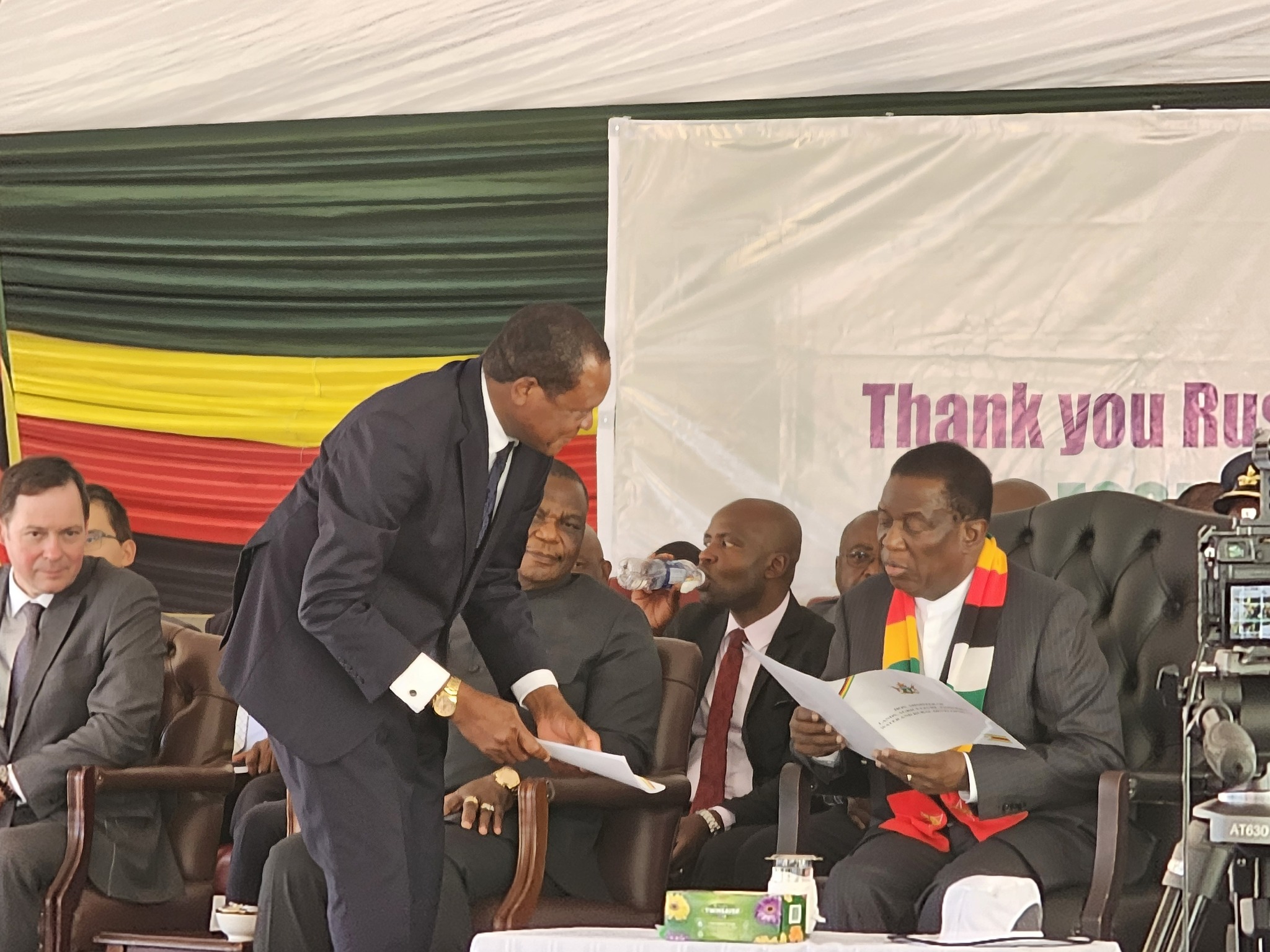
CABINET has adopted a report on the El-Nino-induced drought mitigation and resilience building strategies presented by the Minister of Lands, Agriculture, Fisheries, Water and Rural Development, Honourable Dr Anxious Masuka
In the report Masuka said that Zimbabwe’s two-pronged approach to climate-proofing agricultural production adopted in 2020 was bearing fruit with the country returning to national cereal sufficiency in normal rainfall years.
“At the small-holder level, the sustainable intensive conservation model, Pfumvudza/Intwasa, with the attendant agro-ecological matching of crops, launched in the 2020/2021 summer season, has largely worked well but it too is ultimately a rain-fed practice, relying on rainfall for its success.
At the national level, Cabinet approved the Accelerated Irrigation Rehabilitation and Development Plan in 2021, that seeks to develop 350 000 hectares for summer irrigation by 2025
The programme aims to produce 1.8 million mt of summer cereals annually, a figure that is adequate to feed the nation and generate a surplus.
“The nation will recall that Cabinet in 2023 also approved the designation of Agricultural and Rural Development Authority (ARDA) as the country’s food security agent, with a target to annually produce 500 000 metric tonnes of summer cereals from its 100 000 hectares irrigable area and 300 000 metric tonnes of winter cereals from the 60 000 hectares irrigable area.
President Emmerson Mnangagwa recently declared a National State of Disaster following this devastating 2023/2024 summer season El Nino-induced drought covering an indicative resource requirement of USD2 billion for mitigation and USD717 million for resilience building.
Th report was optimistic that Zimbabwe should emerge from this drought stronger and better-able to withstand future climate-induced shocks.
“To this end, the country has initiated interventions focused on mitigation and resilience-building classified into five pillars, Cereals Horticulture Livestock Fisheries and Water and Irrigation.”
Generally the resilience-building plan entails 100% agro-ecological matching of crops together with 100% adoption of Pfumvudza/Intwasa with supplementing irrigation where possible at critical stages by all households; and capacitation of institutions, workers and farmers.
#Cereals
Regarding contingency mitigation measures for cereals, government will import 300 000 metric tonnes of maize, while grain movement from areas with surplus to areas with deficit will be facilitated by the Grain Marketing Board.
This in addition to the wheat-based food security strategy which will contribute over 500 000 metric tonnes to the strategic grain reserve contributing to the maximum social welfare requirements of 780 000 metric tonnes.
#Horticulture
The focus will be on the development of the 10 000 Village Business Units across all provinces. To this end, drilling rigs have been re-distributed according to the number of villages by province.
To date, 1 329 128 of the 3.5 million vegetable packs have been distributed, 1 294 000 sweet potato virus-free elite vines have been distributed to 72 520 farmers and 229 of the targeted 10 000 Village Business Units established.
#Livestock Mitigation and Resilience
Strategies include the private sector importing 400 000 metric tonnes of maize for stock feed; and construction of 1 620 water troughs in 1 620 rural Wards. To date, 1 464 756 hay bales have been produced. Going forward, 1 000 dip tanks will be rehabilitated, while the distribution of 18 million indigenous chickens and 1.8 million goats will be accelerated under the Presidential Poultry and Goat Schemes.
#Fisheries
The country has 59 dams stocked with 465 000 fingerlings. Commercial cage fishing will be promoted as a business on 134 dams.
It is expected that 20 000 fish ponds will be established on 10 000 Village Business Units by November 2024, while the Government production of fingerlings is expanded annually by 60%.
#Water Resources, Irrigation Development
It is noted that Zimbabwe is endowed with good water resources.
The country has a total of 10 600 dams with potential to irrigate 1.46 million hectares. If the country taps into transboundary waters of the Zambezi river around Mlibizi and Kanyemba areas, an additional 450 000 hectares can be irrigated.
Cabinet notes that there has been a four-fold increase in the annual area under irrigation developed since 2020, when the Accelerated Irrigation Rehabilitation and Development Plan was launched cumulatively 219 000 hectares is now irrigable, of the targeted 496 000 by 2026.
An irrigation investment conference will be held on 5 July 2024 to accelerate investments in irrigation
Mechanisation
The number of tractors has increased by 60% and combine harvesters by 45% since the launch of the Agricultural Food Systems and Rural Transformation Strategy in 2020. To date the Belarus facility has provided the country with 1 337 tractors while a further 3 161 tractors and 80 combine harvesters are expected, while Bain New Holland will avail 700 tractors, and John Deere will avail 1300 tractors, 80 combine harvesters, 600 planters, and 200 boom sprayers.
The nation is also informed that the Government has solid strategies and measures for drought mitigation and resilience building. There are adequate grain stocks in the Strategic Grain Reserve to last until year end.
Agriculture
Mnangagwa declares drought national disaster
Dear Zimbabweans; The foregoing situation of the climate change induced drought requires measures and interventions as provided for in our laws. To that end, I do hereby declare a nationwide State of Disaster, due to the El Nino- induced drought
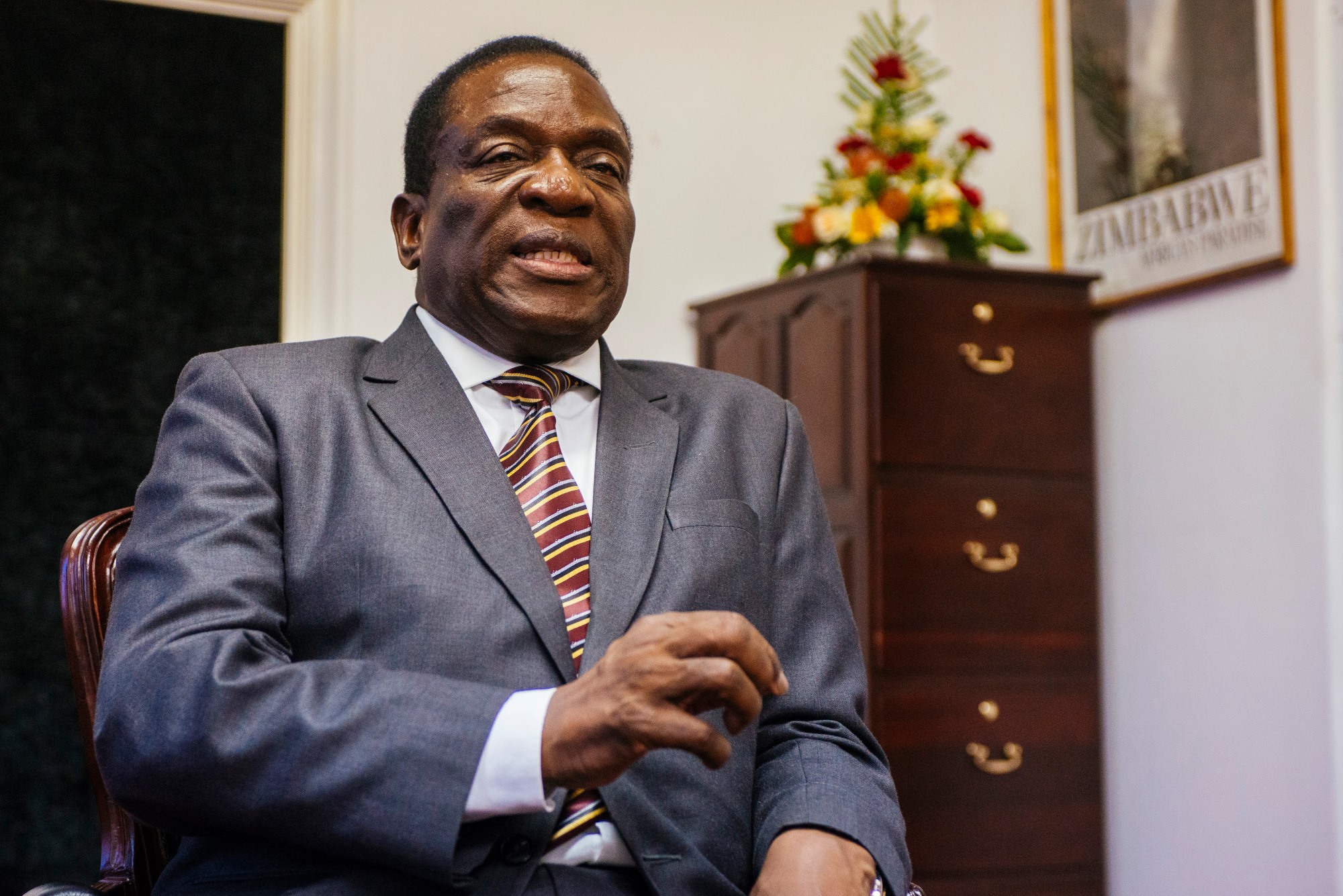
President Emmerson Mnangagwa has declared the drought which is ravaging the country a state of disaster.
A post by Mnangagwa on the Ministry of Information Publicity and Broacasting Services X account reads:
“Dear Zimbabweans; The foregoing situation of the climate change induced drought requires measures and interventions as provided for in our laws. To that end, I do hereby declare a nationwide State of Disaster, due to the El Nino- induced drought. Accordingly, I now invoke Section 27, Subsection 1 of the Civil Protection Act ( Chapter10:6), which provides that: “if any time it appears to the President that any disaster of such a nature and extent that extra ordinary measures are necessary to assist and protect the persons affected or likely to be affected by the disaster in any area of the country, the Presidency may, in such a manner as he considers fit, declare that, with effect from a date specified by him , a state of disaster exists within an area or areas specified by him in the Declaration” President
Agriculture
Reports identify ways to develop Zim climate-smart economy
leveraging the private sector to build a climate-smart resilient economy could reap dividends for the country that has significant opportunities in several key value chains such as agribusiness, tourism, and green minerals mining

The Zimbabwe Country Climate and Development Report (CCDR) and the Country Private Sector Diagnostic Report (CPSD) reports launched recently by the World Bank point to Zimbabwe’s abundant natural capital (mineral and renewable) as key to driving the country’s growth potential.
Furthermore, leveraging the private sector to build a climate-smart resilient economy could reap dividends for the country that has significant opportunities in several key value chains such as agribusiness, tourism, and green minerals mining.
The CCDR reveals that while Zimbabwe is rich in mineral and renewable natural capital, existing public sector resources to address climate change challenges are limited by inadequate access to development finance and weak domestic revenue mobilization.
According to the CCDR, Zimbabwe’s current macroeconomic constraints pose a double bind in which the inability to finance development, climate adaptation, and mitigation leads to increased land degradation, higher net emissions, and less climate resilience.
The CCDR defines a higher growth, greener, and more resilient path out of this double bind by linking demand from global value chains to Zimbabwe’s significant reserves of energy transition minerals.
This valuable source of foreign exchange from mining could catalyze investment in renewable energy and fund other climate actions, such as expanding social protection, conservation agriculture, and land restoration.
The report proposes a set of “no-regrets” climate actions that are low-cost and could help shift Zimbabwe to an Upper-Middle Income (UMIC) level.
“Zimbabwe is at a crossroads, and the path that it takes now will have consequences for both its development and climate action, requiring further adaptation measures to limit climate change impacts on GDP growth alongside tough and robust governance systems of the mining sector,” says Victoria Kwakwa, World Bank Vice President for Eastern and Southern Africa.
The government aims to transform Zimbabwe into an upper-middle-income country by 2030.
According to the CPSD, the private sector has retained its resilience across many value chains.
Sectors such as agriculture and agribusiness, tourism and mining hold significant potential.
Zimbabwe has significant growth potential in the short term.
Despite these areas of comparative advantage, Zimbabwe’s economic performance remains frail due to entrenched macroeconomic instability, low investment, and limited structural transformation.
The CPSD notes that the primary constraint to development is the chronic macroeconomic instability, historically caused by loose monetary and fiscal policy, foreign exchange rationing, and structural challenges.
Therefore, sustaining economic growth will require Zimbabwe to tackle its macroeconomic and structural challenges, tighten fiscal policy and to rein in local-currency liquidity are critical to boosting growth.
“This CPSD for Zimbabwe gives us valuable insights into the challenges faced by Zimbabwe’s private sector,” says IFC Acting Country Manager for Zimbabwe, Vasco Nunes. “By leveraging the recommendations in the report, the government can boost investment, and unlock the latent potential in sectors ranging from agriculture to tourism and mining.”
This CCDR and CPSD are the first such reports in Zimbabwe and aim to support the country’s efforts to achieve its development goals within a changing climate by quantifying its impacts on the economy and laying out a path to robust, climate-resilient growth.
About Country Climate and Development Reports (CCDRs)
The World Bank Group’s Country Climate and Development Reports (CCDRs) are new core diagnostic reports that integrate climate change and development considerations. They will help countries prioritize the most impactful actions that can reduce greenhouse gas (GHG) emissions and boost adaptation, while delivering on broader development goals. CCDRs build on data and rigorous research and identify main pathways to reduce GHG emissions and climate vulnerabilities, including the costs and challenges as well as benefits and opportunities from doing so. The reports suggest concrete, priority actions to support the low-carbon, resilient transition. As public documents, CCDRs aim to inform governments, citizens, the private sector and development partners and enable engagements with the development and climate agenda. CCDRs will feed into other core Bank Group diagnostics, country engagements and operations, and help attract funding and direct financing for high-impact climate action.
About Country Private Sector Diagnostic (CPSD)
The World Bank Group’s Country Private Sector Diagnostic (CPSD) is a core diagnostic report that assesses opportunities for and constraints to private sector-led growth. Each CPSD includes an assessment of the state of the private sector, identification of near-term opportunities for private sector engagement, and recommendations of reforms and policy actions to mobilize private investment and drive solutions to key development challenges. By combining both economy-wide and sector-specific analysis of constraints, the CPSD helps to create a common analytical basis to shape policy dialogue and guide transformational private investment.
Agriculture
Climate-smart agriculture bridges gender divides
In the past, she says, she could not own land or sell farm produce at the market. These were liberties enjoyed only by men male counterparts.
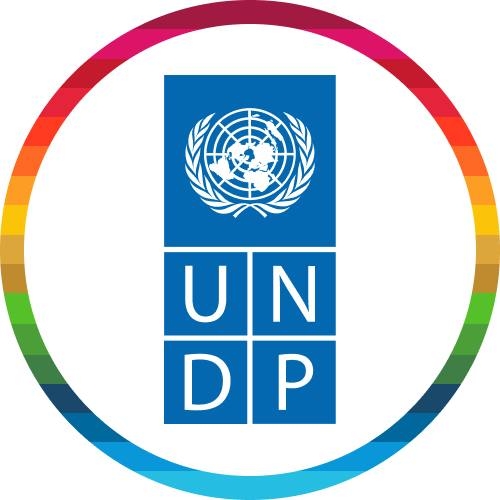
CAREFULLY watering her crops, Elizabeth Dube, a 73-year-old smallholder farmer from Matabeleland South, is reflective.
In the past, she says, she could not own land or sell farm produce at the market. These were liberties enjoyed only by men male counterparts.
With limited opportunities and without financial independence, life was challenging. It became even more so when her children moved to neighbouring South Africa in search of greener pastures. At an age when many might consider retirement, Elizabeth had become the cornerstone of her family, raising eight grandchildren and searching for a means to support them.
“My four children moved out of my home and left with me with eight grandchildren to care for. The oldest is 15 and the youngest is three years old.” – Elizabeth
Today, however, Elizabeth owns a small piece of land. As of last year, she also has access to a solar-powered irrigation scheme – a crucial asset in a drought-prone region becoming increasingly dry due to climate change.
Today, with income from the sale of cabbages, onions, maize, and wheat that she grows on her land, she now has the means to send her grandchildren to school. And to put food on the table.
Women at the forefront of the national economy
In Zimbabwe, where agriculture employs almost three-quarters of the population, women are the backbone of the sector constituting around 70 percent of household labour in rural communities. They are also the linchpin of homes, heading more than 40 percent of households in rural areas.
Despite this, women across Zimbabwe remain marginalized in both social and economic spheres. Particularly in rural areas, women’s access to land is almost entirely determined by men. Patriarchal norms prevent women from accumulating assets and productive resources, limiting their ability to offer assets as collateral, and so limiting access to credit and loans.
Gender differences in property rights, access to information, and cultural, social, and economic roles make women particularly vulnerable to the impacts of climate change.
For example, recurring drought and low rainfall negatively impact water supplies and fuel wood accessibility, which increases the distances women need to go to secure such resources.
Women also remain marginalized in terms of adaptation strategies to cope with climate change impacts, especially limited access to irrigation systems.
Challenging the gender divide with inclusive, climate-smart agriculture
The leading role of women on farms and in rural communities is reflected in a transformative government-led project in southern Zimbabwe now underway with the backing of the Green Climate Fund and UN Development Programme.
At the heart of the project – aimed at helping farmers move from basic farming for survival to farming that can withstand climate challenges and sell products in markets – is the recognition that women are more than just a vulnerable group in need of support but are in fact agents of change.
With this wisdom, the project has been equipping women farmers with the tools they need to prosper.
One component is infrastructure, specifically, solar-powered irrigation systems. These systems, 21 of which are being installed under the project, are key to ensuring a sufficient, reliable source of water for crops but also for household use.
“I don’t have to walk long distances to look for water after school anymore,” says Samantha Dube from Masholomoshe, where an irrigation system was installed in September 2023.
“Now I can focus on my homework and wash my uniform at home instead of the river.”
Since her husband fled to South Africa nearly two years ago, Banele Ncube, 37, has been taking care of their three children alone. Like Elizabeth, whose land is opposite, she depends on the new irrigation scheme.
Banele notes, “Before the irrigation scheme was installed, our major challenge was lack of water. I would wake up very early to water my crops, but sometimes the taps and hosepipes would not be enough for all of us. At times I ended up going home without and would have to come back even earlier the following day.”
She hopes its capacity will be increased.
Another component is knowledge – of climate-smart water management and conservation agriculture, as well as how to adapt production practices to cope with increasing rainfall variability and dry spells.
The training of extension officers – employed by the government to communicate information to farmers – is having a multiplier effect.
As a result of the officers taking their new knowledge back to the field, more than 45,000 women farmers are now practicing conservation agriculture through a combination of “minimum tillage” – a practice that involves reducing the extent of soil disturbance during planting – and mulching.
The trainings are also intended to help farmers transition from subsistence to commercial agriculture.
Change afoot
While women in rural Zimbabwe face many challenges – among them patriarchal land ownership, lack of adequate agriculture training, and limited access to finance – progress is underway.
Elizabeth’s story is emblematic of a larger narrative unfolding across the country and Africa.
Women, who have traditionally been marginalized in agriculture, are now at the forefront of its transformation.
They are not only adapting to climate challenges but are also driving economic empowerment and resilience.
This shift is not incidental but the result of targeted efforts to address gender disparities in land ownership, access to resources, and decision-making processes.
Promoting women in leadership
The project has been deliberate about influencing not just the participation, but the leadership of women in Irrigation Management Committees set up in association with each system installed.
A diversity of women in the community have stepped forward to take an active part on the committees and almost half (46 percent) of the committees” members are women holding strategic positions, including that of Chairperson, Treasurer, and Secretary, a 20 percent increase from baseline.
“Since I became a part of my community’s Irrigation Management Committee, my husband and children respect me so much. I am now included in the decisions of my family, including being consulted by my husband’s family before making major decisions,” says Florence Ncingo, Vice Secretary of the Masholomoshe Irrigation Scheme.
“My organisation and planning skills have also improved through the trainings I have attended.”
Secretary of the Irrigation Scheme in Midlo, Ipithule Ndlovu echoes this experience, saying men now come to her with inquiries concerning the scheme, a shift from how things were handled in the past.
Beyond the farm
Back on her farm, Elizabeth is optimistic for the future, positive her yields will only continue to increase – resulting in strengthened capacity to fend for her family.
The benefits of empowering women, however, extend beyond the personal. When afforded equal opportunities, women are able to play a leading role in increasing the productivity and climate resilience of the agricultural sector, enhancing access to water resources and its sustainable use, ensuring greater food security for communities, and driving economic growth.
Building Climate Resilience of Vulnerable Agricultural Livelihoods in Southern Zimbabwe is a government-led project with finance from the Green Climate Fund, implemented with the UN Development Programme (UNDP). It is one of more than 80 UNDP-supported climate change adaptation projects worldwide, under implementation as of February 2024.
Source: reliefweb.int
-
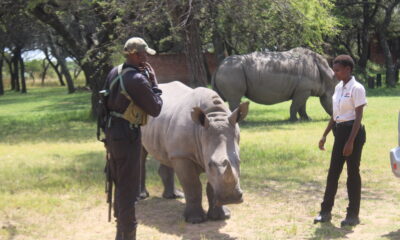
 Tourism1 year ago
Tourism1 year agoAntelope Park joins White Rhino fight
-

 Breaking News11 months ago
Breaking News11 months agoZim Community Trailblazers Awards (ZCTA) Call for Entries (5th Edition)
-

 Health and Wellness1 year ago
Health and Wellness1 year agoLeaked nudes: Traumatic impact, healing pathways
-

 Entertainment4 years ago
Entertainment4 years agoCharambas ZCTA maiden winners
-
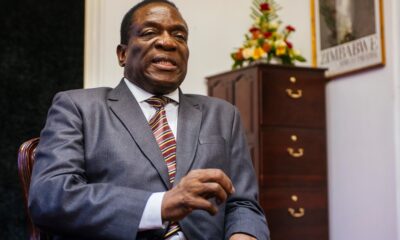
 Breaking News1 year ago
Breaking News1 year agoMnangagwa approves Starlink Zim operations
-

 Entertainment1 year ago
Entertainment1 year agoSetina Mandiveyi plots to shine
-
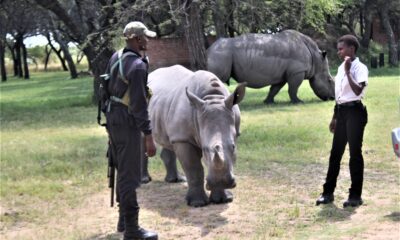
 Tourism1 year ago
Tourism1 year agoWhite Rhino grazing at Zim’s biggest private game reserve
-

 Zim Community Trailblazers Awards8 months ago
Zim Community Trailblazers Awards8 months agoZim Community Trailblazers Awards plot first-rate celebrations

